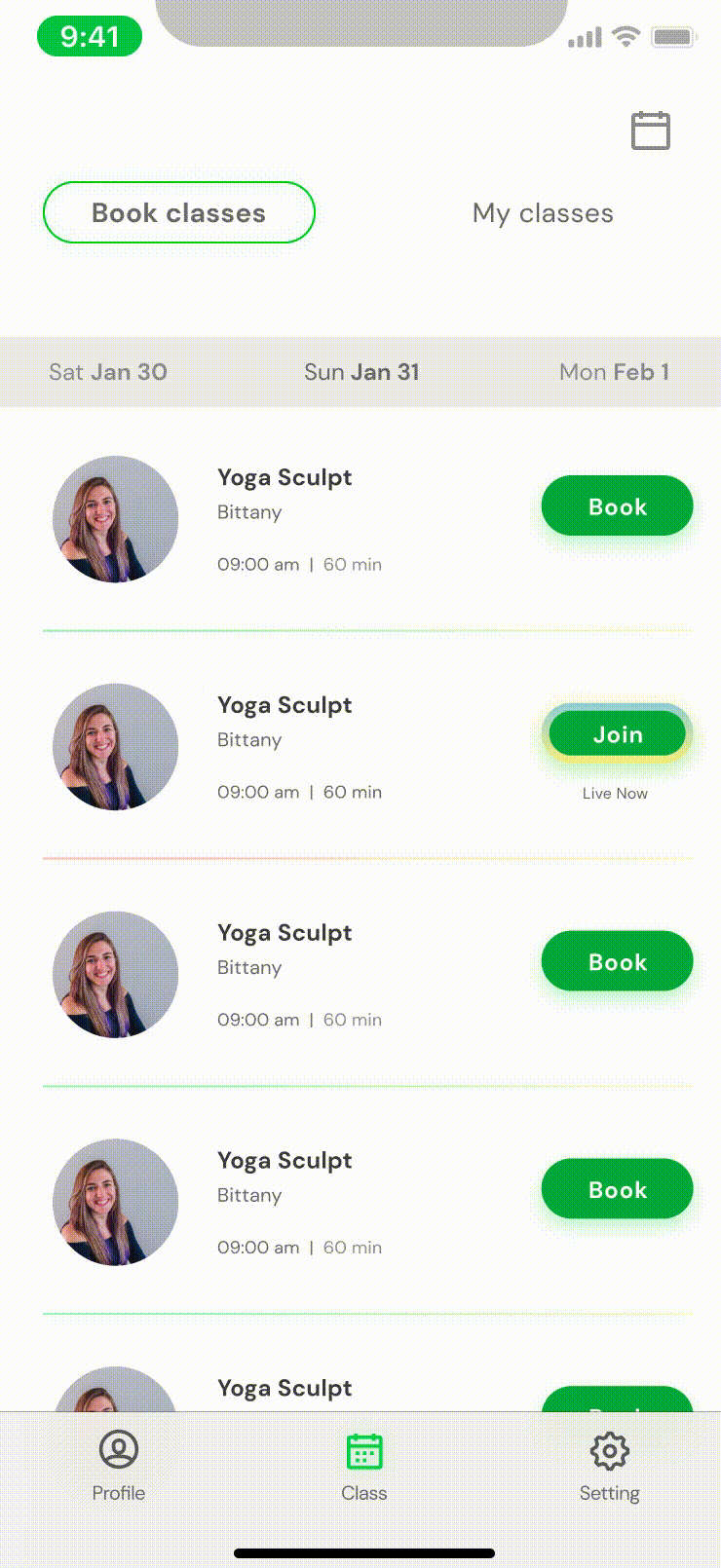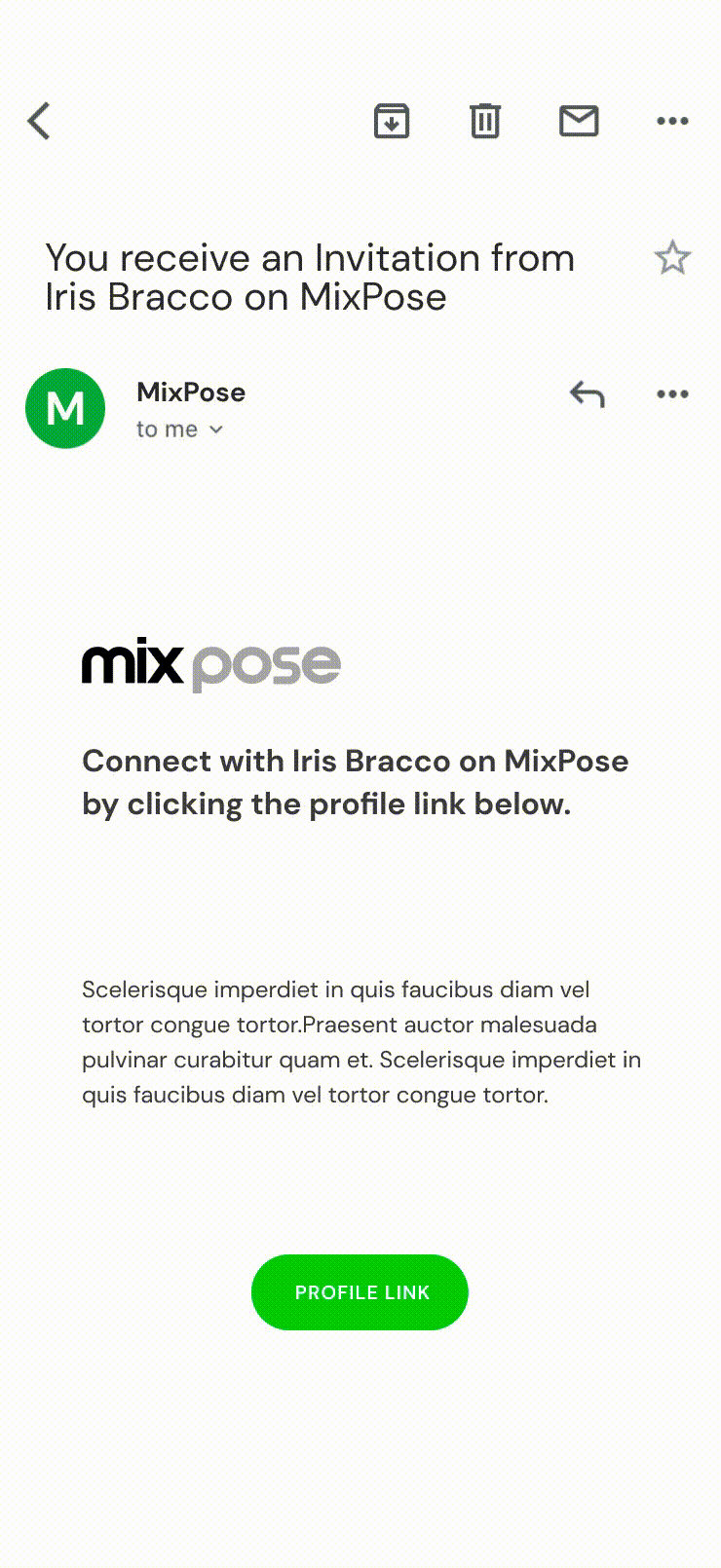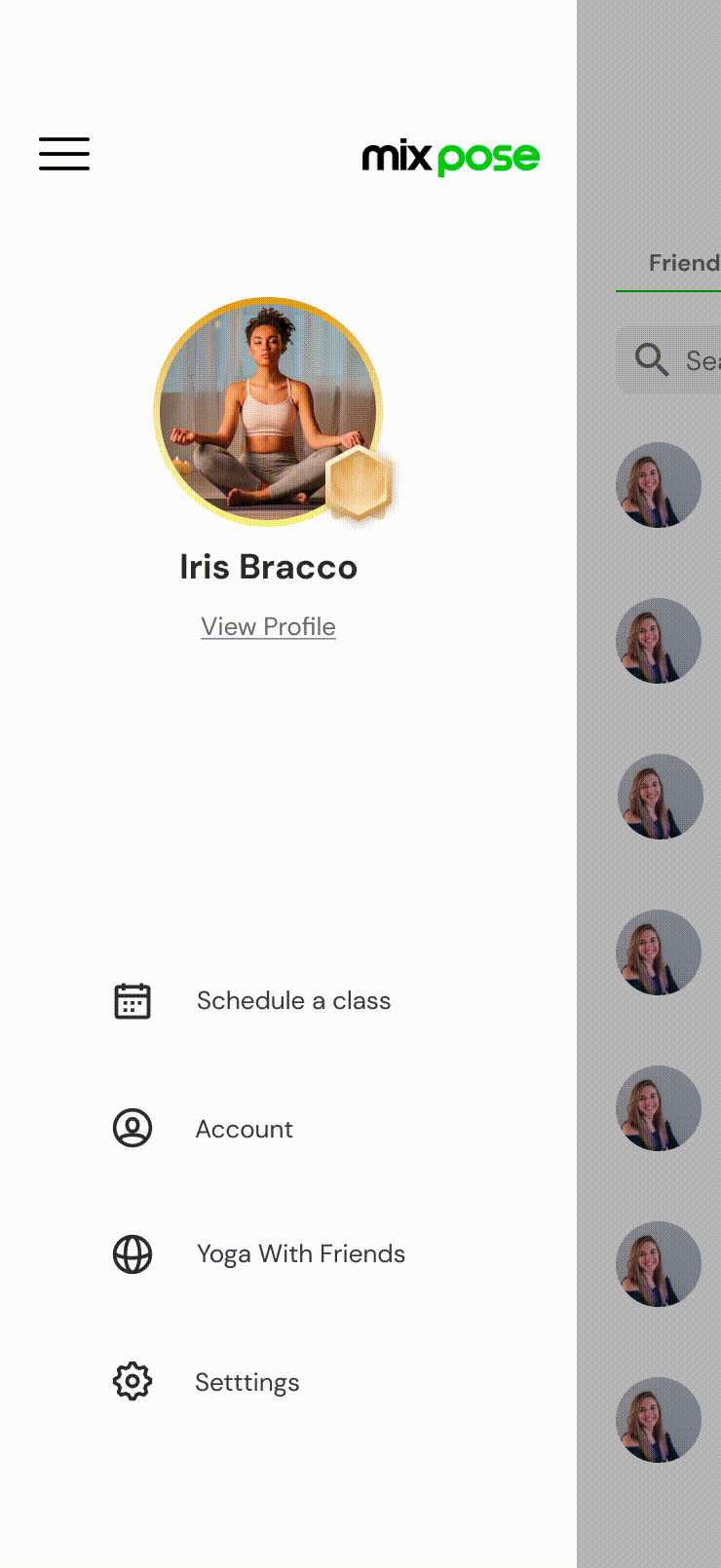
Native App & Desktop Web Redesign
Ideation and Iteration of the user flow of Yoga With Friends feature to create an intuitive user experience.
Role
UX Designer
Visual Design Lead
Deliverables
Persona
Usability Testing
Design Iteration
User Flow
Heuristic Analysis
Wireframes
High-fidelity prototype

Final Solution
Design for Finding & Understanding.
The Yoga with Friends feature is incorporated in the booking, joining and checking class flows. This integration was intended to minimize extraneous frictions, better suit the users priorities, and eventually increase user retention.








Design Process
Current
Site & App
New user flow
User &
Heuristic analysis
Two solutions to improve "Yoga with Friends" feature
The Final solution
Challenges
MixPose business goal

Provide a better virtual yoga experience by enhancing Yoga with Friends feature that allows users to join classes with their friends together. Eventually increasing the user retention and number of membership subscriptions.
A 0% task completion
We conducted heuristic analysis, user research and user survey to find out the root cause of the problem.
-
The current design is an MVP that lacks visible information about the feature, complete functionality, and consistency between devices. This causes friction for potential users that were invited to join MixPose and results in abandoning the Yoga with Friends feature.
-
Information overload causes confusion and frustration.
📉

User journey

Information overload
Personas
“I didn’t see the link to install MixPose or to create an account in my email friend's invitation”
“I feel like I just got ghosted by a website.”
“The adding friend's icon is not clear to me as I couldn’t figure out what task will be executed when I click on it.”
The Structured Yogi
Motivations
-
Training results
-
Mental and physical health
-
Connection with Friends
Frustrations
-
Isolation due to the pandemic
-
Time consuming process to join class
-
Lack of information and instruction
“Who do you work out with?"

Friends
“Why do you want to be able to socialize/connect with other users in fitness apps?"

Motivation &
Sharing Results
“How likely are you to take a fitness class if a friend invited you to participate with them?"

Extremely likely
User survey synthesis
Synthesis
After conducting several rounds of user research, we were able to know that the majority of their current and potential users are result oriented, pragmatic and like connecting with their friends. MixPose is dedicated to promoting the Yoga with Friends feature with the thought that it could ease the isolated feeling due to the pandemic. However, because their current design is an MVP, this feature has over-complicated the process of joining virtual yoga class and it lacks complete functionality to finalize a smooth user flow which causes low retention rate and 0% task completion.

Wireframe & User Flow
We categorized the whole process into three stages: book class, join class, and check class.
We proposed a few design solutions for each. Our design ambition was to create a more intuitive and consistent design.
First Round of Ideation & Iteration




We created prototypes based on the phases of using the Yoga With Friends feature of mobile apps and desktop web platforms. Users can RSVP a class, check scheduled classes, send invitations to friends, and connect with friends. Next, we ran usability testings with 15+ users to see if we solved their existing problems.
The Issues
Even though we got some positive feedback after usability testing, we noticed that gaps during the flow of inviting friends still persisted:
-
Join class process is too complicated to understand.
-
Some participants were having a hard time capturing the Yoga with Friends feature as scheduling classes was their first priority.
-
The user flows we drew are not intuitive and clear enough.
-
Too many extraneous functions that confused users.

Critical Thinking
How to create an enjoyable experience and reduce friction for our users?
How do you define an enjoyable experience?
How to simplify the joining virtual class flow and keep key functionalities in the meantime?
What is the users main goal when using MixPose?
Second Round of Ideation & Iteration
Design Hypothesis
After asking many rounds of “why”, we realized that although the team had identified the issues associated with information management, solutions had not been integrated into our design strategy. We needed to think outside the box to attack the root causes of our users' inconsistent and fractional experience. After redeveloping the information architecture, user flow and wireframing our designs, we proposed the final solution:
Design for Finding & Understanding - Yoga with Friends feature is incorporated in the flows to minimize extraneous frictions.

The Final Solution
Booking Class Flow
-
Prioritize the users' main task: booking classes
-
Promote feature and meet business goal: users will benefit from incentives using invitation link (2-week free trial)
-
Users are able to manage the notification settings of Yoga with Friends




Joining class flow
-
Prioritize users' main task: joining classes
-
Yoga with Friends functions conditionally so that users can keep joining class by not acting on it




Checking class flow
-
Prioritize users' main task: checking class
-
Yoga with Friends is always available but optional. User can opt in or out.




Setting (privacy & notification)
-
Find the correct balance between enabling users and avoiding unwanted outcomes by confirming destructive actions and making it easy to cancel operations.
-
Dedicated pages that allow users to build custom settings specific to their preferences. Users can always update and make changes if they find themselves in different situations or simply change their mind.



Setting
Notification
Yoga With Friends
High-fidelity Prototype
Book class page
Book class page








My class page
Join class page
Design system

Takeaways
-
Besides understanding user needs and values of MixPose, many rounds of usability testing taught me the inversion perspective mental model:
-
-
Consider the outcome that I'd like to avoid instead of thinking about my desired outcome. It reveals what can cause the opposite to be true and prevent me from achieving my goal.
-
It helps me think outside my normal thought patterns and approach problems from a different angle that opens a world of new possibilities that I didn’t know existed.
-
-
Great design is the iteration of good design
-
The combination of data-supported metrics and thoughtful qualitative information is the key to make meaningful correlations and suggestions